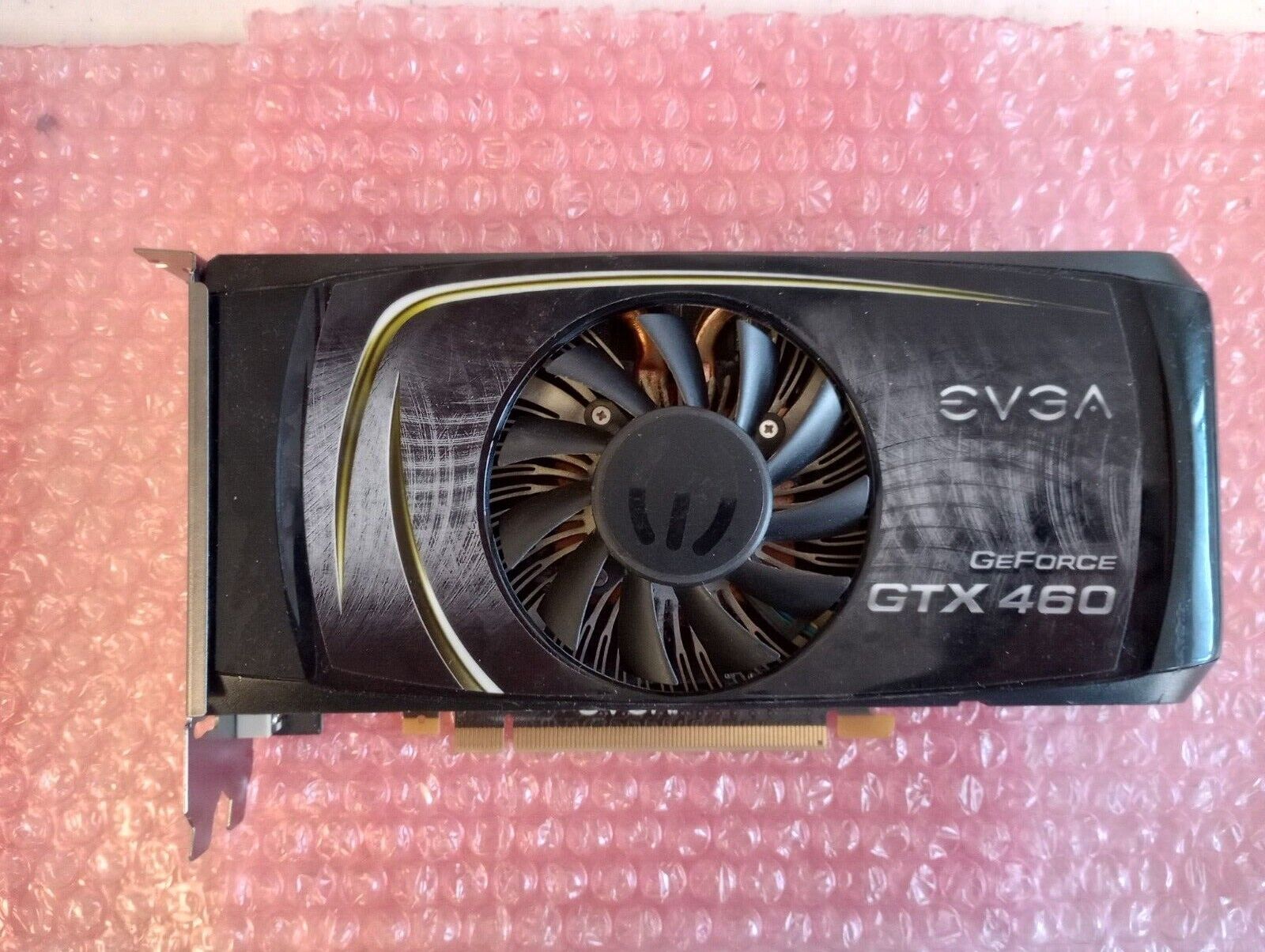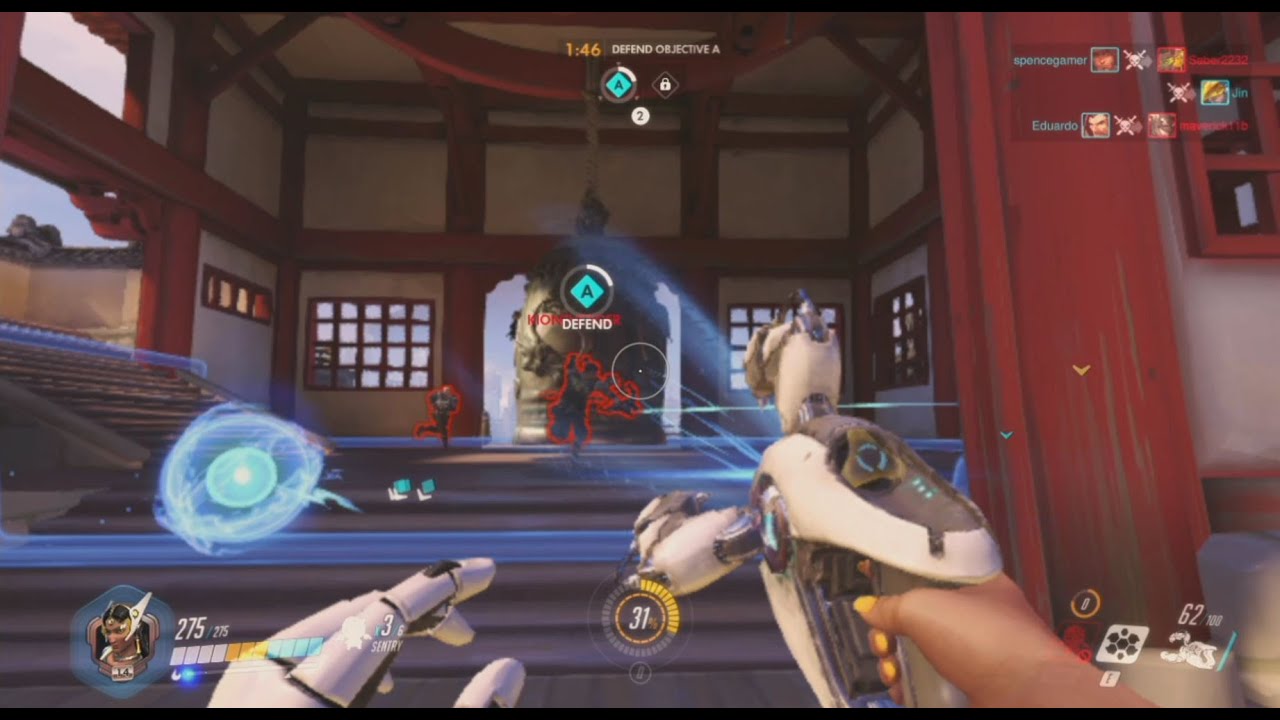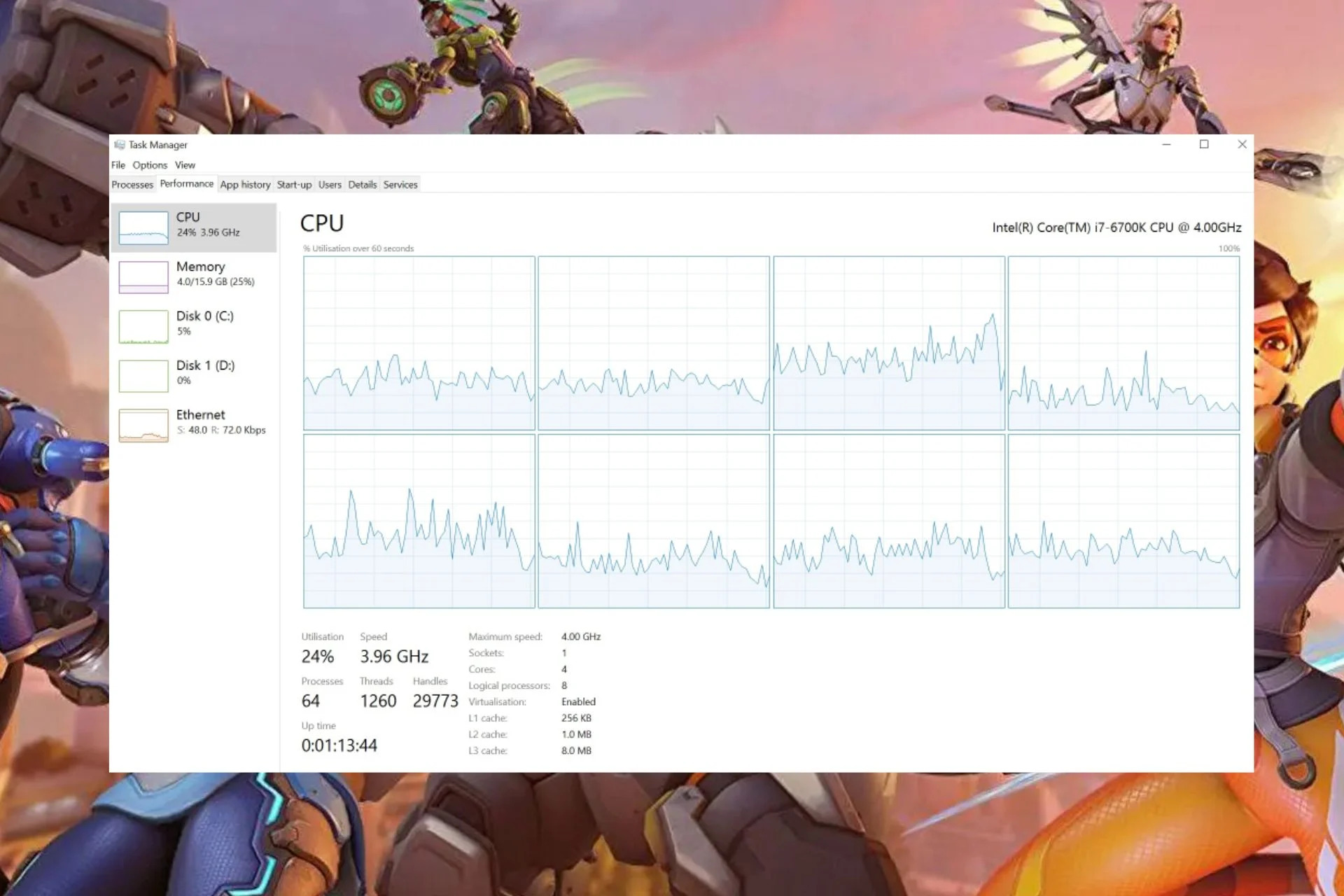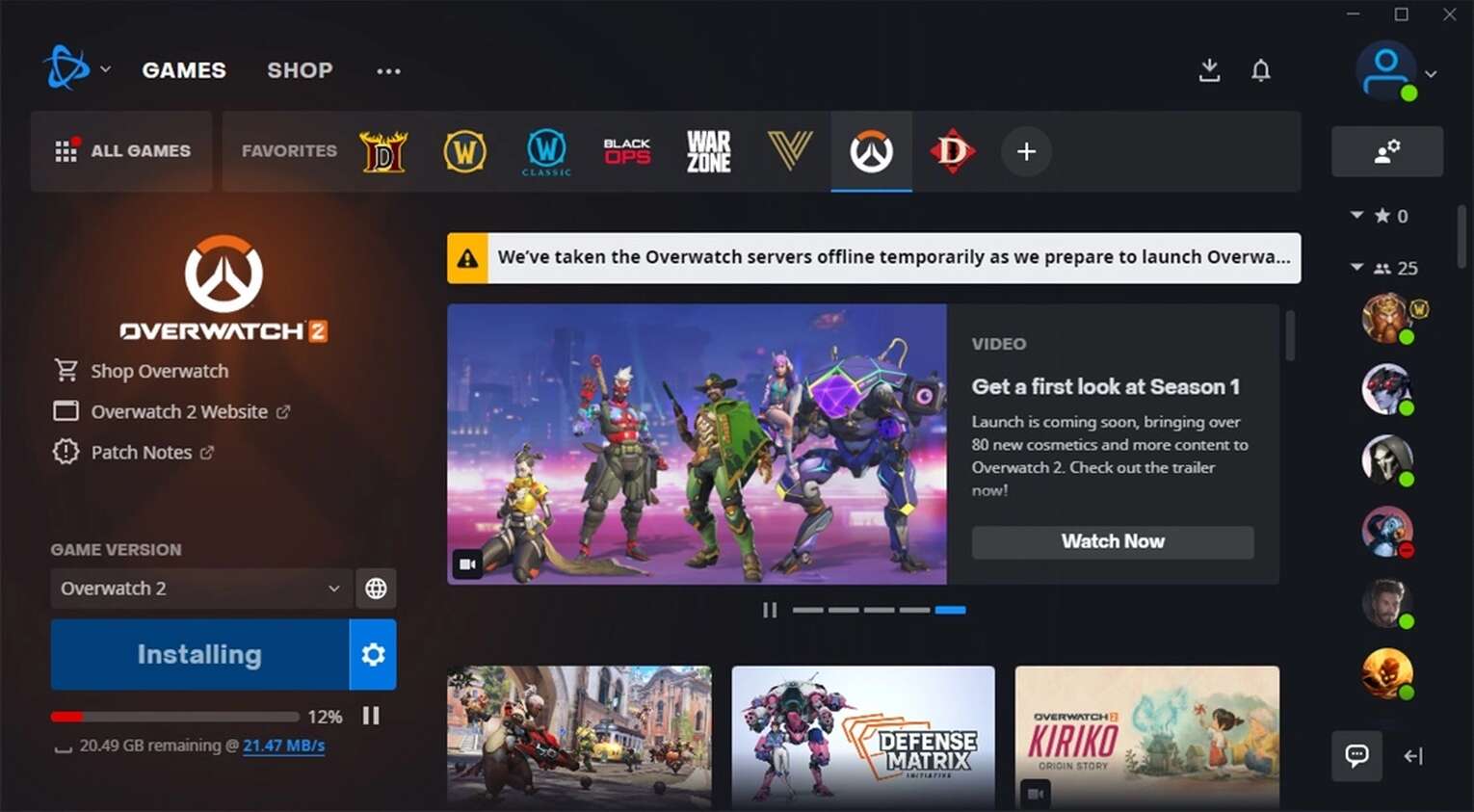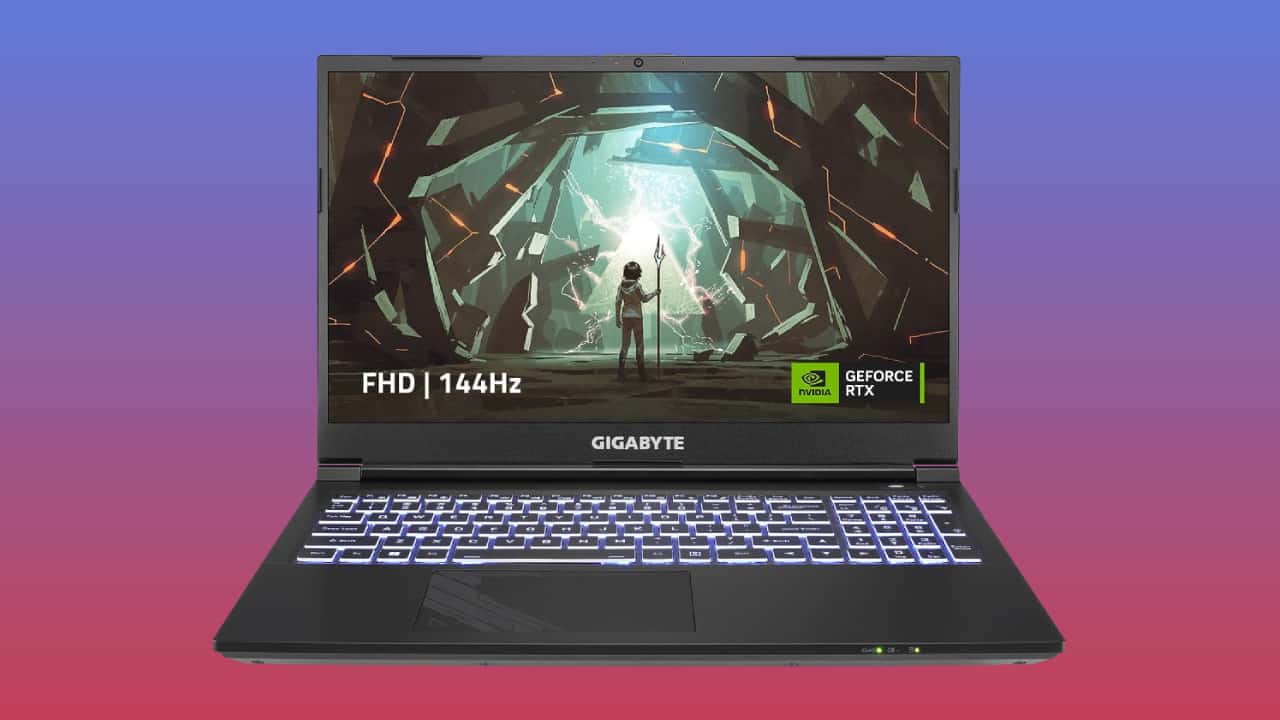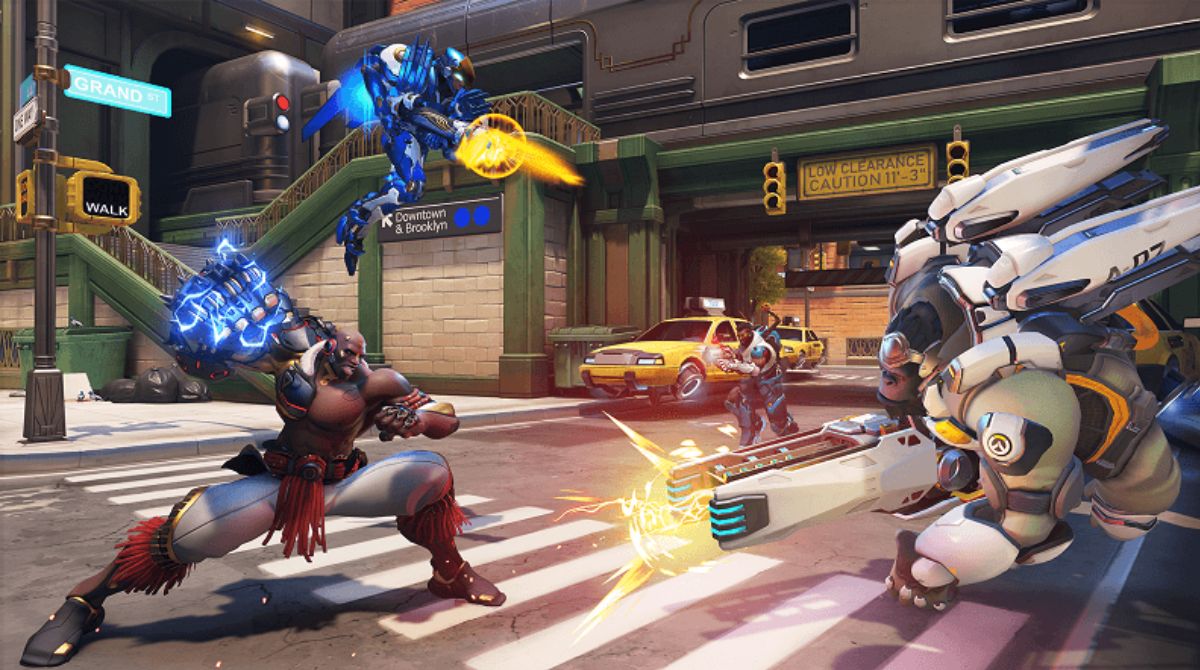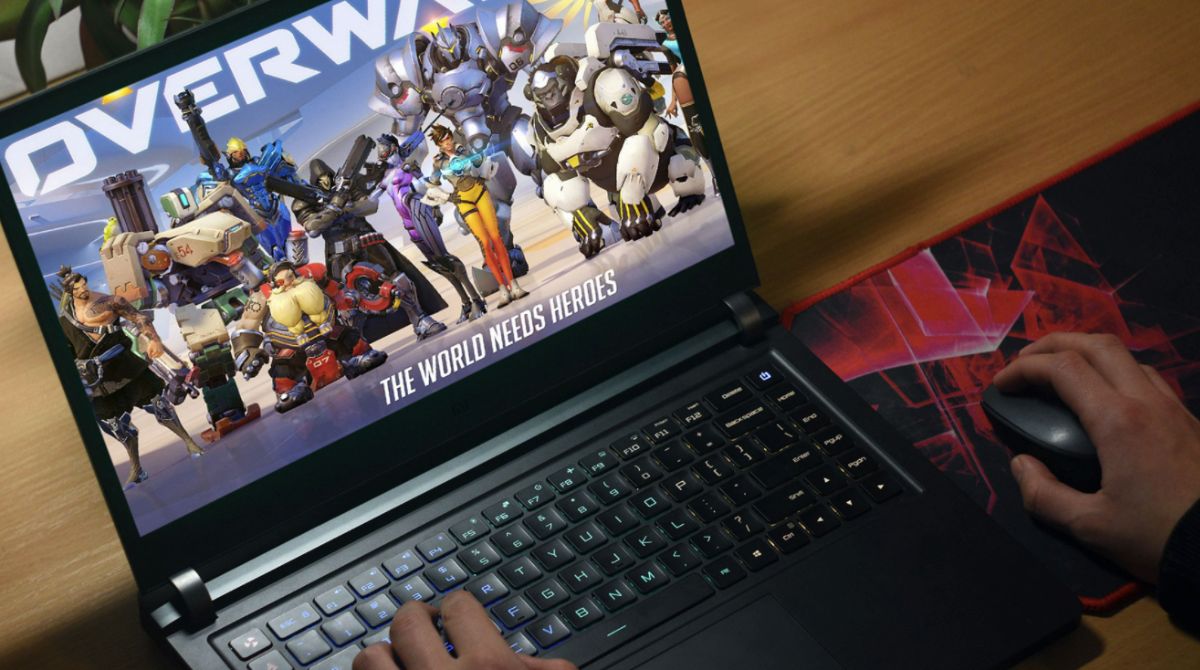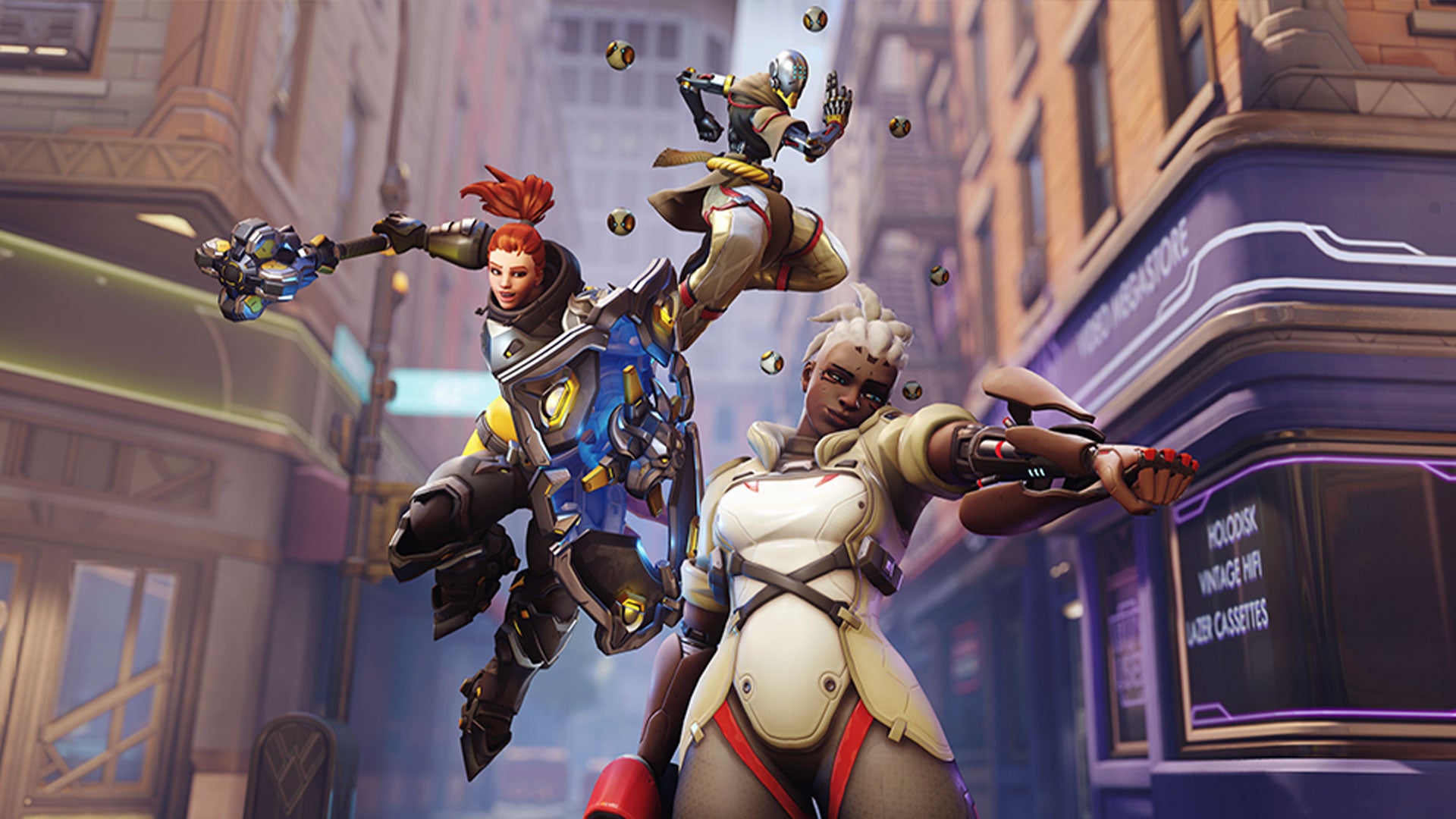Introduction
Overwatch, the popular team-based multiplayer first-person shooter developed by Blizzard Entertainment, has captivated gamers worldwide with its stunning visuals and fast-paced gameplay. Whether you’re a casual player or a competitive gamer, having the right graphics card is essential for a smooth and immersive gaming experience. In this article, we will explore the graphics card requirements for Overwatch, recommending options for high-end, mid-range, and budget ranges.
But why is the graphics card so crucial for Overwatch? Well, the graphics card is responsible for rendering the game’s graphics, textures, and effects, ensuring that everything appears smooth, sharp, and realistic. A powerful graphics card can also provide higher frame rates, reducing input lag and enhancing gameplay responsiveness. With Overwatch’s vibrant world and fast action, having a capable graphics card is vital to fully enjoy all the game has to offer.
Blizzard has provided official system requirements for Overwatch, detailing the minimum and recommended hardware specifications to run the game smoothly. While the minimum requirements allow the game to run, meeting the recommended requirements ensures optimal performance, allowing you to experience Overwatch at higher resolutions and detail levels. In this article, we’ll focus on the recommended graphics cards for Overwatch, as they provide the best balance between performance and price.
As technology advances, new graphics cards are constantly being released, offering better performance and new features. In this guide, we’ll recommend options from various price ranges, ranging from high-end to budget graphics cards. This way, you can find the card that suits your gaming needs and budget. Please note that the prices and availability of graphics cards may vary, so it’s always a good idea to check with reputable retailers or online marketplaces for the latest information.
Now, let’s dive into the world of graphics cards and discover the recommended options for Overwatch that will take your gaming experience to the next level.
Understanding the System Requirements
Before we get into the specific graphics card recommendations for Overwatch, it’s important to understand the game’s system requirements. Blizzard has provided clear guidelines to help players ensure their systems can handle the game.
The minimum system requirements for Overwatch include a modern processor, at least 4GB of RAM, and a DirectX 11-compatible graphics card with at least 1GB of VRAM. While these requirements allow the game to run, they may result in lower frame rates and reduced graphical quality.
On the other hand, meeting the recommended system requirements will provide a more optimal gaming experience. The recommended specifications include a faster processor, 8GB or more of RAM, and a more powerful graphics card with at least 2GB of VRAM. Meeting or exceeding these requirements will allow you to enjoy Overwatch at higher resolutions and with improved visual fidelity.
It’s important to note that the system requirements can vary depending on factors such as the chosen graphics settings, resolution, and desired frame rates. If you’re aiming for a smoother gaming experience or plan to play at higher graphics settings, it’s advisable to consider a graphics card that exceeds the recommended requirements.
Another factor to consider is the operating system. Overwatch supports both Windows and macOS, but it’s crucial to check the specific hardware compatibility for each platform. For example, on Windows, DirectX 11 is required, while on macOS, Metal graphics technology is necessary for optimal performance.
Lastly, keep in mind that system requirements may change with future updates and expansions to the game. It’s always a good idea to check for any updated requirements before purchasing or upgrading your graphics card.
Now that we have a clear understanding of the system requirements, let’s explore the graphics card options that will bring Overwatch to life with stunning visuals and smooth gameplay.
Recommended Graphics Cards for Overwatch
When it comes to selecting a graphics card for Overwatch, you’ll want to choose one that can handle the game’s demanding visuals and fast-paced action. We’ve categorized the recommendations into high-end, mid-range, and budget options to cater to a variety of budgets and performance requirements.
High-End Graphics Cards
For gamers who want to experience Overwatch at the highest settings with smooth frame rates, high-end graphics cards are the way to go. These cards offer top-notch performance and can handle the game’s graphics-intensive features without breaking a sweat.
One highly recommended option in this category is the NVIDIA GeForce RTX 3080. With its cutting-edge Ampere architecture and 10GB of GDDR6X memory, this graphics card delivers exceptional performance and ray-tracing capabilities that enhance the game’s visuals. Additionally, the AMD Radeon RX 6900 XT is another powerful choice, boasting 16GB of GDDR6 memory and impressive compute performance.
Mid-Range Graphics Cards
If you’re looking for a balance between performance and price, mid-range graphics cards provide a great solution. These cards offer good performance at a more affordable price point, making them a popular choice for many gamers.
An excellent mid-range option is the NVIDIA GeForce GTX 1660 Super. With its 6GB of GDDR6 memory and efficient Turing architecture, this card delivers smooth gameplay and is capable of running Overwatch at high settings. Another notable option is the AMD Radeon RX 5600 XT, which offers 6GB of GDDR6 memory and excellent value for its performance.
Budget Graphics Cards
If you’re on a tight budget but still want to enjoy Overwatch, there are several budget-friendly graphics cards available that can handle the game at lower settings.
The NVIDIA GeForce GTX 1650 Super is a popular choice in this category. With 4GB of GDDR6 memory, it provides decent performance for its price, allowing you to enjoy Overwatch without breaking the bank. Another budget-friendly option is the AMD Radeon RX 5500 XT, offering 4GB of GDDR6 memory and solid performance for its price range.
Remember that the recommended graphics cards mentioned here are just a few examples, and there are many other options available from different manufacturers. Always compare prices, performance, and user reviews to find the best graphics card that suits your budget and gaming needs.
Now that we’ve explored the recommended graphics cards for Overwatch, let’s consider some other factors to keep in mind when choosing the perfect graphics card for your gaming setup.
High-End Graphics Cards
For gamers who demand the absolute best performance and visual fidelity in Overwatch, high-end graphics cards are the way to go. These cards are designed to tackle even the most graphics-intensive games and provide an unparalleled gaming experience. Here are some of the top high-end graphics cards for Overwatch:
NVIDIA GeForce RTX 3080: The NVIDIA GeForce RTX 3080 is a powerhouse graphics card based on the latest Ampere architecture. With its 10GB of GDDR6X memory and impressive CUDA core count, this card delivers exceptional performance in Overwatch. It supports real-time ray tracing, allowing for more realistic lighting and reflections, making the game truly come alive.
AMD Radeon RX 6900 XT: The AMD Radeon RX 6900 XT is another high-end graphics card that offers incredible performance. With 16GB of GDDR6 memory and AMD’s RDNA 2 architecture, this card delivers smooth gameplay and high frame rates in Overwatch. It also supports hardware-accelerated ray tracing and variable rate shading, further enhancing the visual quality of the game.
NVIDIA GeForce RTX 3070: The NVIDIA GeForce RTX 3070 is a slightly more affordable option compared to the RTX 3080, but still delivers impressive performance. With 8GB of GDDR6 memory and the same Ampere architecture, this card can handle Overwatch at high settings with ease. It supports ray tracing and DLSS (Deep Learning Super Sampling) technology, providing improved visual quality and performance.
AMD Radeon RX 6800 XT: The AMD Radeon RX 6800 XT is a high-end graphics card that offers great value for its performance. With 16GB of GDDR6 memory and AMD’s RDNA 2 architecture, this card delivers smooth and immersive gameplay in Overwatch. It supports hardware-accelerated ray tracing, allowing for stunning visuals and realistic lighting effects.
These high-end graphics cards not only provide excellent performance in Overwatch but also future-proof your gaming setup for upcoming titles and advancements in graphics technology. However, it’s important to consider factors such as power consumption, cooling requirements, and compatibility with your system before making a purchase.
Keep in mind that high-end graphics cards can be quite expensive, so if budget is a concern, you may want to consider mid-range or budget options that still offer respectable performance in Overwatch.
Now that we’ve explored the high-end graphics card options, let’s move on to the next section where we’ll discuss some mid-range graphics cards that provide a balance between performance and price.
Mid-Range Graphics Cards
If you’re looking for a graphics card that strikes a balance between performance and price, mid-range options are a great choice for playing Overwatch. These cards offer respectable performance capabilities without breaking the bank. Here are some of the top mid-range graphics cards for Overwatch:
NVIDIA GeForce GTX 1660 Super: The NVIDIA GeForce GTX 1660 Super is a popular choice in the mid-range segment. With 6GB of GDDR6 memory and the efficient Turing architecture, this card delivers smooth gameplay in Overwatch at high settings. It offers a good balance of performance and affordability, making it an excellent option for gamers on a budget.
AMD Radeon RX 5600 XT: The AMD Radeon RX 5600 XT is another excellent mid-range graphics card for Overwatch. With 6GB of GDDR6 memory and AMD’s RDNA architecture, this card delivers solid performance and is capable of running the game at high settings with smooth frame rates. It offers great value for its price, making it a popular choice among budget-conscious gamers.
NVIDIA GeForce GTX 1650 Super: The NVIDIA GeForce GTX 1650 Super is a budget-friendly option that still provides decent performance in Overwatch. With 4GB of GDDR6 memory, this card can handle the game at medium to high settings, providing a smooth gaming experience. It’s a good choice for those who want to enjoy Overwatch without breaking the bank.
AMD Radeon RX 5500 XT: The AMD Radeon RX 5500 XT is another mid-range graphics card that offers good value for its performance. With 4GB of GDDR6 memory, this card can handle Overwatch at medium to high settings, providing enjoyable gameplay. It’s a budget-friendly option for casual gamers or those with less demanding requirements.
These mid-range graphics cards strike a balance between performance, affordability, and power efficiency, making them suitable for most gamers. While they may not offer the same level of performance as high-end graphics cards, they can still provide a smooth and enjoyable Overwatch experience at a more affordable price point.
When choosing a mid-range graphics card, consider factors such as your desired graphics settings, resolution, and future gaming needs. It’s also important to ensure compatibility with your system’s power supply and physical dimensions to avoid any compatibility issues.
Now that we’ve explored the mid-range graphics card options, let’s move on to the next section where we’ll discuss budget-friendly graphics cards that still offer decent performance in Overwatch.
Budget Graphics Cards
If you’re on a tight budget but still want to enjoy Overwatch, there are several budget-friendly graphics cards available that can handle the game at lower settings. These options provide a cost-effective solution for casual gamers or those with less demanding requirements. Here are some of the top budget graphics cards for Overwatch:
NVIDIA GeForce GTX 1650 Super: The NVIDIA GeForce GTX 1650 Super is a popular choice in the budget segment. With 4GB of GDDR6 memory, this card can handle Overwatch at medium settings, providing a smooth gaming experience. It offers good value for its price, making it a solid choice for budget-conscious gamers.
AMD Radeon RX 5500 XT: The AMD Radeon RX 5500 XT is another budget-friendly graphics card that still delivers decent performance. With 4GB of GDDR6 memory, this card can handle Overwatch at medium settings, providing enjoyable gameplay. It offers good value for its price, making it an affordable option for casual gamers.
NVIDIA GeForce GTX 1650: The NVIDIA GeForce GTX 1650 is an entry-level graphics card that can run Overwatch at lower settings. With 4GB of GDDR5 memory, this card provides a satisfactory gaming experience for budget-conscious gamers. While it may not deliver the same level of performance as higher-end cards, it still allows you to enjoy Overwatch without breaking the bank.
AMD Radeon RX 570: The AMD Radeon RX 570 is another affordable graphics card option for playing Overwatch. With 4GB of GDDR5 memory, this card can handle the game at medium settings, providing decent performance for its price. It’s a viable option for those looking for a budget-friendly solution.
These budget graphics cards offer a cost-effective way to enjoy Overwatch without compromising too much on performance. While they may not provide the same level of graphical fidelity or frame rates as higher-end options, they can still deliver an enjoyable gaming experience at lower settings.
When considering a budget graphics card, be sure to check the power requirements and compatibility with your system. Additionally, keep in mind that while these budget options may be sufficient for Overwatch, they may struggle with more demanding games or future releases. If you are looking to play other graphics-intensive titles, it may be worth considering a mid-range or higher-end card for a more future-proof setup.
Now that we have explored the budget graphics card options, let’s move on to the next section where we’ll discuss important factors to consider when choosing a graphics card for Overwatch.
Factors to Consider When Choosing a Graphics Card for Overwatch
When selecting a graphics card for Overwatch, there are several important factors to consider to ensure optimal performance and compatibility with your gaming setup. Here are some key factors to keep in mind:
Performance:
One of the primary considerations when choosing a graphics card is its performance capabilities. Look for a card that meets or exceeds the recommended system requirements for Overwatch to ensure smooth gameplay and high frame rates. Consider factors such as the number of CUDA cores or Stream processors, memory bandwidth, and clock speeds to gauge a card’s performance potential.
VRAM:
Video RAM or VRAM is crucial for storing and accessing textures and data during gameplay. Overwatch recommends a minimum of 2GB of VRAM, but for optimal performance, aim for at least 4GB or more. Higher VRAM capacity allows for smoother loading and rendering of textures, especially at higher graphics settings.
Power Consumption and Cooling:
Graphics cards can consume a significant amount of power, so it’s essential to factor in your system’s power supply capacity. Ensure that your power supply can adequately handle the card’s power requirements to prevent stability issues. Additionally, consider the cooling mechanism of the card, as overheating can affect performance and longevity. Look for cards with efficient cooling solutions such as dual or triple fans and robust heat sink designs.
Connectivity and Display Outputs:
Check the connectivity options and display outputs of the graphics card to ensure compatibility with your monitor setup. Most modern graphics cards support HDMI, DisplayPort, and DVI connections, but it’s important to verify that the card has the necessary ports to connect your desired display configuration.
Budget:
Set a budget for your graphics card purchase and look for options that offer the best performance within your budget range. Consider the price-to-performance ratio and read reviews from trusted sources to help guide your decision. It’s worth investing in a higher-end card if you prioritize a smoother gaming experience with higher graphics settings and frame rates.
Future-Proofing:
Consider the longevity of the graphics card and its ability to handle future games and updates. While Overwatch may be your main focus now, it’s always wise to think ahead and invest in a card that can handle upcoming releases and advancements in gaming technology. Look for cards that support features such as hardware-accelerated ray tracing and DLSS technology for improved visuals and performance in future titles.
By taking these factors into account, you can make a well-informed decision when choosing a graphics card for Overwatch that meets your performance needs and budget requirements.
Now that we have discussed the essential factors to consider, let’s wrap up our guide with a summary of the key points discussed.
Conclusion
Choosing the right graphics card for Overwatch can greatly enhance your gaming experience, allowing you to enjoy smooth gameplay and stunning visuals. Whether you have a high-end gaming rig or a budget-friendly setup, there are options available to suit your needs.
We explored the recommended graphics cards for Overwatch across different price ranges. For gamers seeking top-tier performance, high-end graphics cards such as the NVIDIA GeForce RTX 3080 and the AMD Radeon RX 6900 XT offer exceptional capabilities and support advanced features like ray tracing. Mid-range cards like the NVIDIA GeForce GTX 1660 Super and the AMD Radeon RX 5600 XT provide a balance between performance and price, making them popular choices for many gamers. Those on a tight budget can still enjoy Overwatch with budget graphics cards like the NVIDIA GeForce GTX 1650 Super or the AMD Radeon RX 5500 XT.
When selecting a graphics card, it’s crucial to consider factors such as performance, VRAM capacity, power consumption, and cooling. Connectivity options and compatibility with your display setup are also important. Setting a budget and future-proofing your graphics card choice are wise considerations to make. By taking these factors into account, you can make an informed decision that aligns with your needs and preferences.
Remember, the recommended graphics cards provided in this article are just a starting point, and there are many other options available. Always research, compare prices, and read reviews to find the best graphics card for your specific requirements.
Now that you have a better understanding of the graphics card options for Overwatch, go forth and take your gaming experience to new heights! Whether you’re battling in competitive matches or exploring the vibrant Overwatch universe, a well-selected graphics card will ensure you’re fully immersed in the action.







